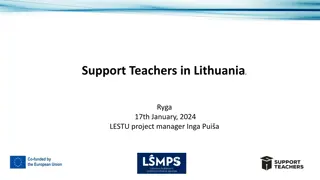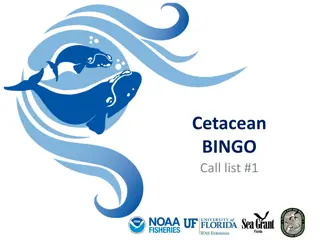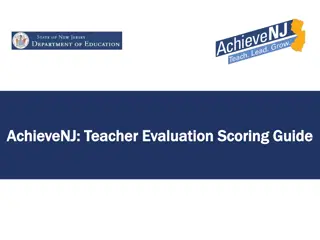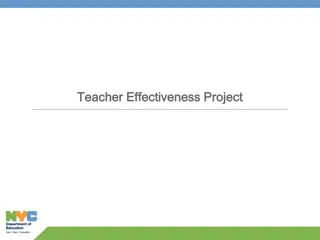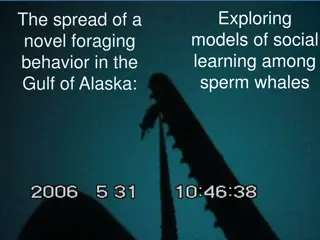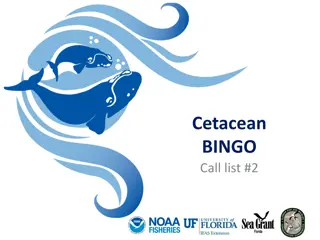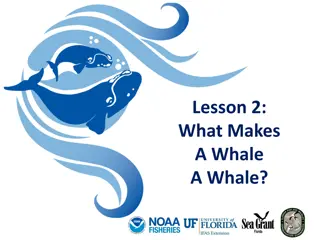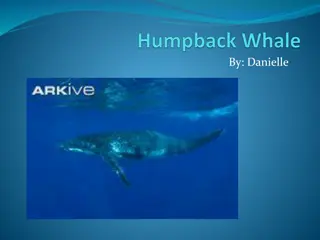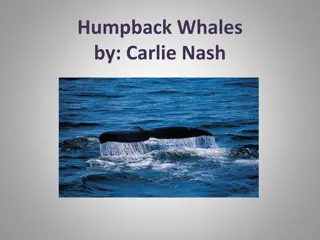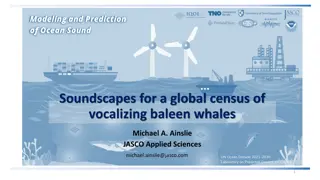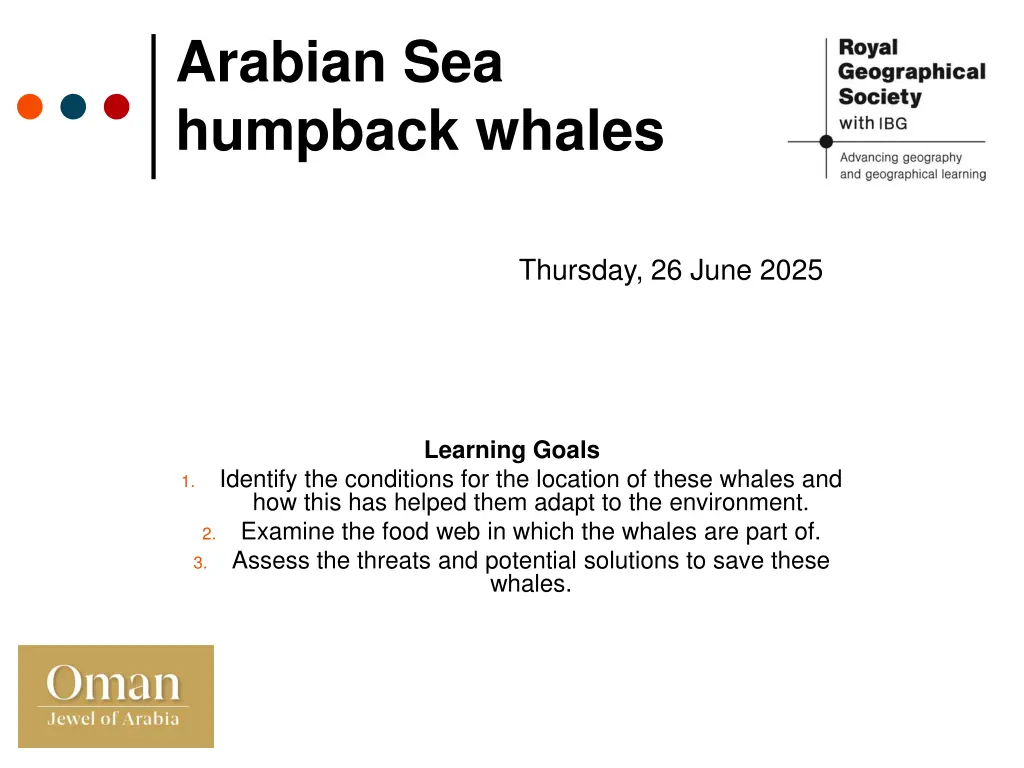
Arabian Sea Humpback Whales Conservation & Threats
Learn about the unique Arabian Sea humpback whales, their non-migratory behavior, adaptation to their environment, food web, threats they face, and potential solutions for conservation.
Download Presentation

Please find below an Image/Link to download the presentation.
The content on the website is provided AS IS for your information and personal use only. It may not be sold, licensed, or shared on other websites without obtaining consent from the author. If you encounter any issues during the download, it is possible that the publisher has removed the file from their server.
You are allowed to download the files provided on this website for personal or commercial use, subject to the condition that they are used lawfully. All files are the property of their respective owners.
The content on the website is provided AS IS for your information and personal use only. It may not be sold, licensed, or shared on other websites without obtaining consent from the author.
E N D
Presentation Transcript
Arabian Sea humpback whales Thursday, 26 June 2025 Learning Goals Identify the conditions for the location of these whales and how this has helped them adapt to the environment. Examine the food web in which the whales are part of. Assess the threats and potential solutions to save these whales. 1. 2. 3.
Arabian Sea humpback whale Arabian Sea humpback whales are the only species of humpback whale which don t migrate between different locations to breed and feed. They are non-migratory. They are a unique sub-species of humpback whale thought to have separated from the Indian Ocean species about 70,000 years ago. They are designated an endangered species.
Where are the whales? You are going to work in pairs to describe the location of where the whales are. You will need to sit back-to-back with one of you looking ant he board and the other facing away so you can't see the board. If you are facing away from the board, you will be drawing what your partner sees on the next slide. You will need a pencil (and rubber) as well as a blank piece of paper. If you are facing the board, you will only be able to use descriptive language no turning around and pointing at the image.
Where are the whales? N W E Muscat S Masirah Island Arabian Sea Salalah
Why are the whales located in the Arabian Sea? The Arabian Sea generates an upswelling of nutrient rich water which provides the whales with food. Because of this upswelling, the whales have no need to migrate. The coast around the governorates of Dhofar and Al Wusta have sheltered, shallower seas for feeding as well as deeper sea shelves. These depth changes are idea places to nurse their young. The whale s faeces (poo) is nutrient rich which species such as phytoplankton feed off providing a biodiverse sea ecosystem ideal for whales to thrive in.
Whales and their food web o Complete the foodweb sheet making the connections between the feeding. Can you add on where the whales feed back into the system? o Thinking about the foodweb, what would happen if Disease wiped out most of the algae? Diets changed and people wanted to eat more octopus. Water warms and there is an abundance of phytoplankton.
What are the threats to the whales? The Arabian Sea humpback whale are categorised as endangered this means they are facing very high risk of extinction in the wild. Around the room there is information about the different threats to these whales. Read about the threats and summarise them in your notes. How would you classify these threats?
How could we help protect the whales? Choose one of the threats you have found out about. What solutions can you think of which helps protect the whales but also considers the need for humans to develop. Create a poster identifying the threat and offering a solution (or solutions) to the threat.
Bycatch (accidental net entanglement from fishing nets) 30-40% of Arabian Sea humpback whales have scars from past entanglement in fishing gear. If caught in fishing nets for long periods of time, the whales cannot resurface to breathe and can suffocate.
Ship strike (being hit by passing boats) The Strait of Hormuz - a shipping route located between Iran and Oman is the third busiest shipping route in the world. Large container ships cannot manoeuvre away from the whales, and they can be hit by boats, injured and potentially killed.
Oil and gas activities Oman has rich minerals and resources which need to be mined to be extracted. Drilling underwater creates noise which the whale s are sensitive to. In addition, there is a risk of pollution from leaking pipes and drilling activities poisoning sea vegetation such as phytoplankton.
Habitat degradation The Dhofar coastline is a hub of development including many building opportunities. Building along the coast provides homes, offices and other facilities but also degrades the coastline. This degradation leads to loss of habitats such as seagrass, mangroves and algae impacting the foodweb of this ecosystem.


